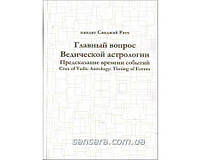Csa Standard B365 Free Download
- 11 Comments!
For the past 30 years I’ve worked in the fire service in several capacities: As a Certified Fire Fighter, a Fire Inspector, a Fire and Explosion Investigator, a Delegated Assistant to the Fire Marshal, and a Fire Service Instructor. It has certainly given me a unique perspective, but no matter how you look at it, there’s one glaring truth: a lot of the incidents we are called out to can easily be avoided.
Jun 27, 2016 - ULC S627 and UL 1482 Standards an accredited. Nual is available for free download on the manufacturer's web site. In Canada, the CSA B365 Installation Code for Solid Fuel Burning Appliances and Equipment. New Standards - Canadian Standards Association(CSA) Standard Number Standard Title Status T/CCSA 239.1-2018 The server cools system Part 1: indirect cold plate Current.
Yes, accidents are going to happen, and some things are outside of our control. But, by and large, most of the incidents that I’ve been assigned to could have been controlled, if not entirely prevented, if the properties had been compliant to the fire code.
Even the most basic fire code violation can lead to devastating losses. So, I’m going to briefly outline just a few of the most common, and most avoidable, Fire Code violations. ACCUMULATION OF COMBUSTIBLE MATERIAL IN AND AROUND BUILDINGS. 
“Combustible materials shall not be accumulated in or around a building in such quantity or such location as to create a fire hazard.” Ontario Fire Code 2015: 2.4.1.1. (1) This can be something as simple as a building manager storing Christmas decorations or cleaning supplies in the electrical room. I understand space is at a premium, but if a fire starts in that room, the combustible storage boxes can significantly accelerate the fire progression, literally acting as fuel for the fire. And it’s not just inside the building where you have to be mindful.
A few years ago I was called to a strip mall where an arsonist had started a fire in a dumpster. Unfortunately, the dumpster was placed up against the building.
This hazardous placement enabled the fire to climb the exterior wall and spread to the interior. Had the dumpster been placed the required 10 feet (minimum) away from the building, the owner would have had to simply replace the dumpster. Instead they were left with hundreds of thousands of dollars in damages to the building and its contents. Exhaust and fire protection systems shall be maintained in accordance with NFPA 96, “Standard for Ventilation Control and Fire Protection of Commercial Cooking Operations”. Ontario Fire Code 2015: 2.6.1.13.
Fires in commercial kitchens: I’ve probably seen 15 of these in the last few years. I always ask the owner, “When was the last time the commercial cooking exhaust hood and related duct work been cleaned?” Regardless of the answer, I usually find a sticker or some paperwork with the cleaning company’s name and I call the contractor to confirm. More often than not the cleaning contractor will say that the owner used to have them come in every 6 months (as per the code), and then it was every 9 months, then once a year, and now it’s been over 2 years because the owner doesn’t want to pay the approximately $300 to have the equipment cleaned.
The first time I ran into this I was a fairly new inspector – so quite a few years ago. I was called to a home to deal with a smoke alarm complaint and the young lady living there asked if she should also have her fireplace cleaned. Since she was renting, I told her that the owner was responsible for all provisions of the fire code. As it turned out, the chimney hadn’t been cleaned or inspected for a few years – the fire code requires it be done annually when the unit is not owner occupied. It also happened that the property management company, who owned the home, owned 200 similar townhouses in the complex. All of those homes now had to be inspected.
When it was all said and done, only 4 out of 200 were deemed safe by the chimney sweep, “WETT” certified company. This constituted an “extreme” risk of fire to all the properties and their occupants. If a fire broke out in just one home it could easily spread to the others because of their close proximity. This finding required me to post an “Immediate Threat to Life Notice” on the front door of all 200 units. This advised the tenants not to use their fireplaces until the safety issue was rectified.